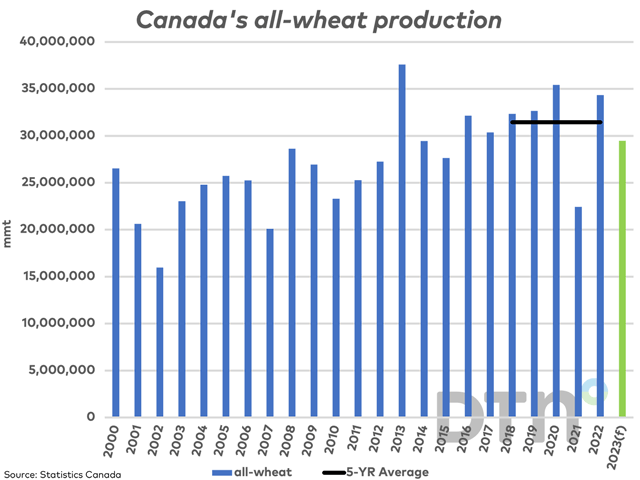
As expected, Statistics Canada's first crop production estimates point to bigger crops in eastern Canada and smaller crops in the West.

As expected, Statistics Canada's first crop production estimates point to bigger crops in eastern Canada and smaller crops in the West.
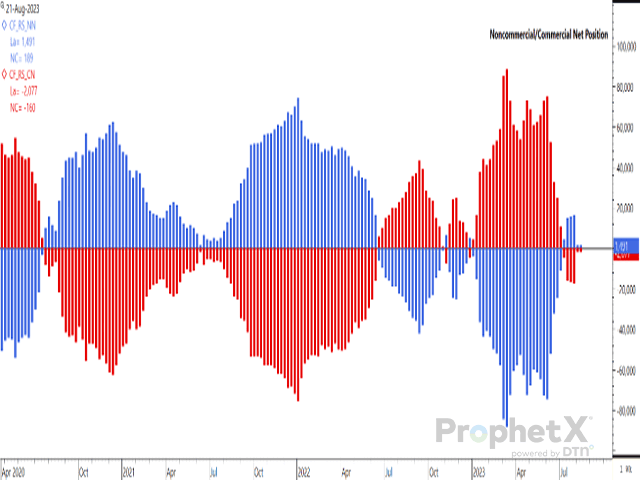
As of Aug. 22, the CFTC reported very modest net futures positions held by commercial and noncommercial traders of canola.
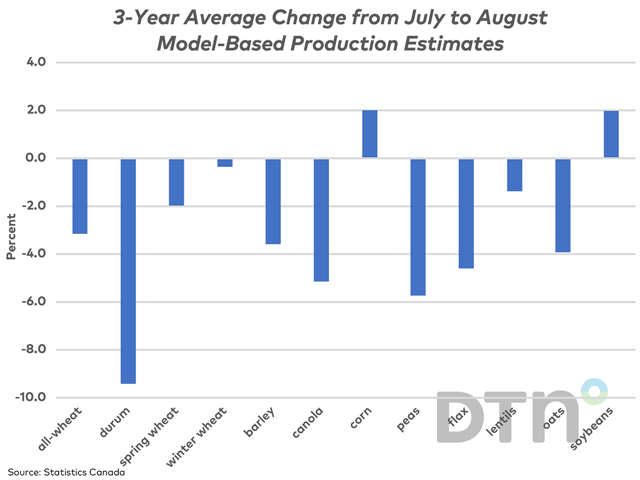
The Aug. 29 Statistics Canada crop production estimates are based on July model data and will be followed by a Sept. 14 report based on August data. During the last three years, most crops tend to be revised lower from one report to the next.
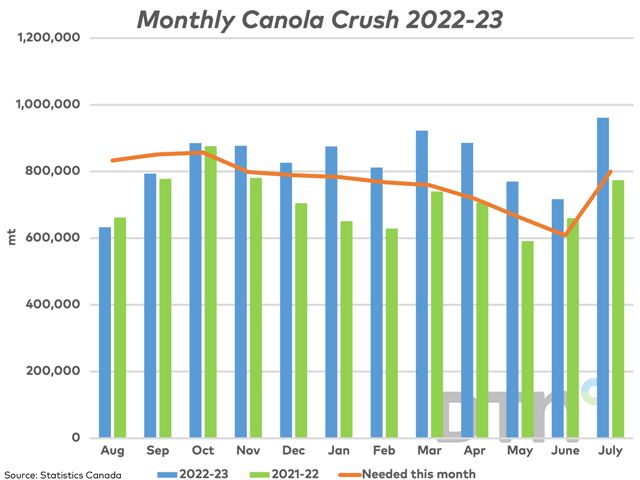
Statistics Canada reported the July canola crush at the highest monthly volume ever, while 2022-23 crush was the third highest on record.
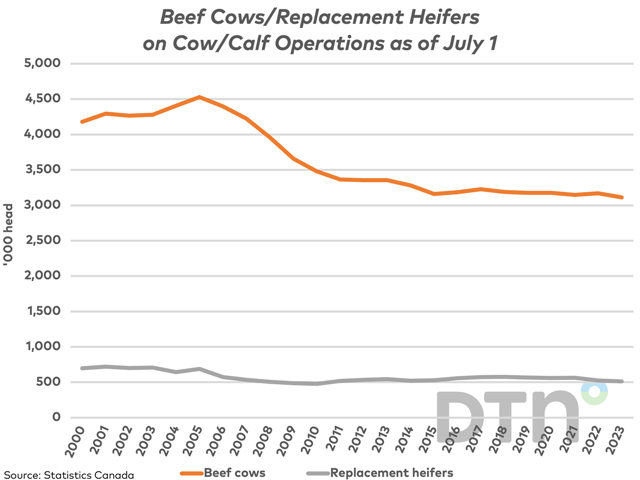
As of July 1, Statistics Canada has estimated lower numbers for cattle, hogs and sheep.
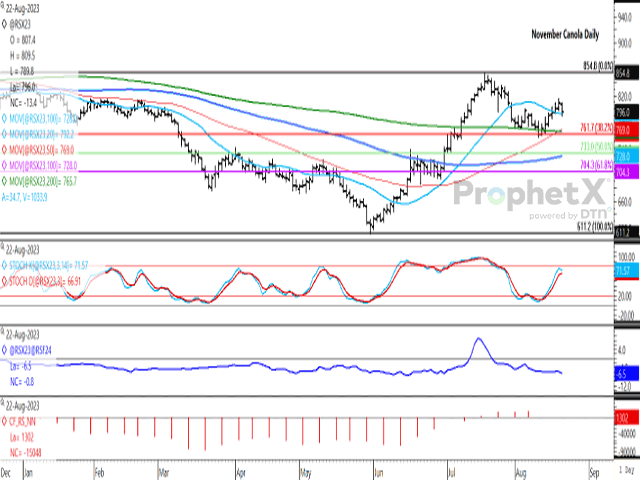
November canola settled lower for the first time in seven sessions while below $800/mt. The session's low found support above the contract's 20-day moving average.
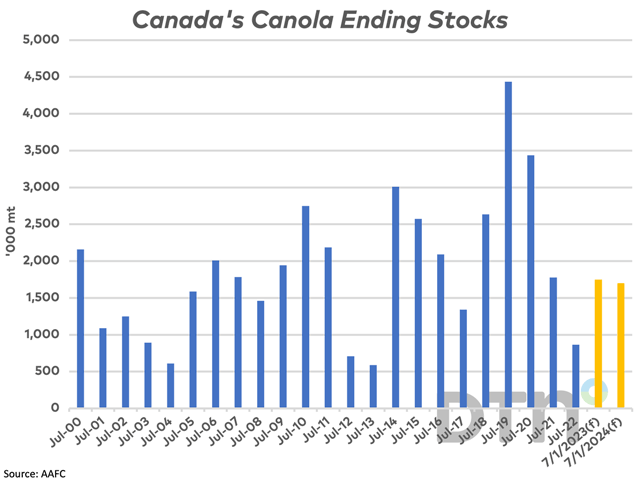
AAFC made some million metric ton revisions this month, with adjustments to wheat, durum and canola balance sheets.
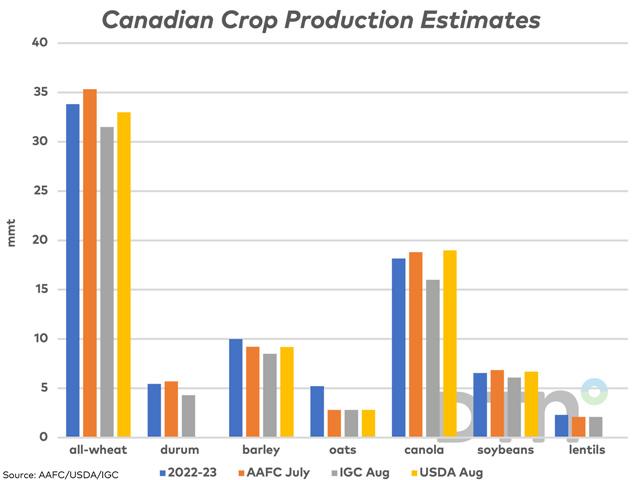
This week's monthly International Grains Council Estimates include a lower revision for Canada's grain production forecast, while noting that there may be more cuts to come.
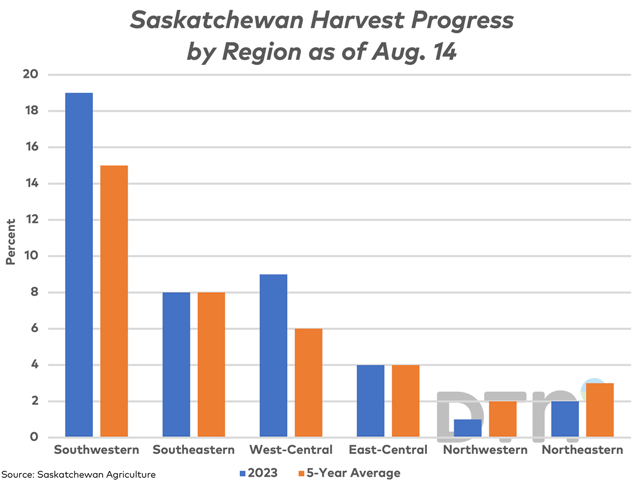
An estimated 9% of the Saskatchewan crop is off as of Aug. 14, which compares to the five-year average of 8%. Activity is noted across the province's six regions.
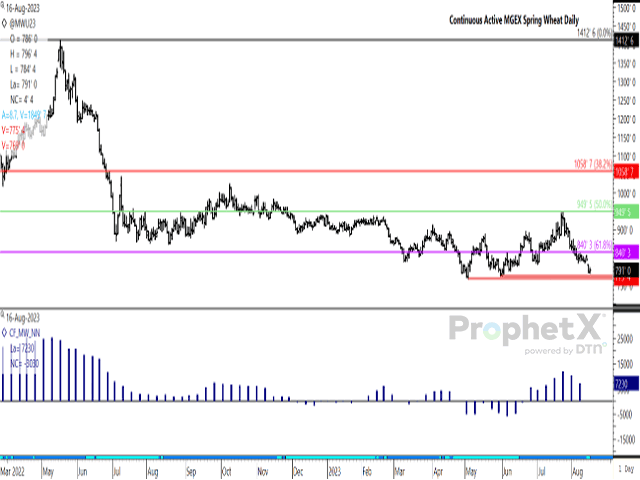
Recent trade has seen the nearby spring wheat futures breach support on the continuous active chart, while nearing long-term support from previous weekly lows.
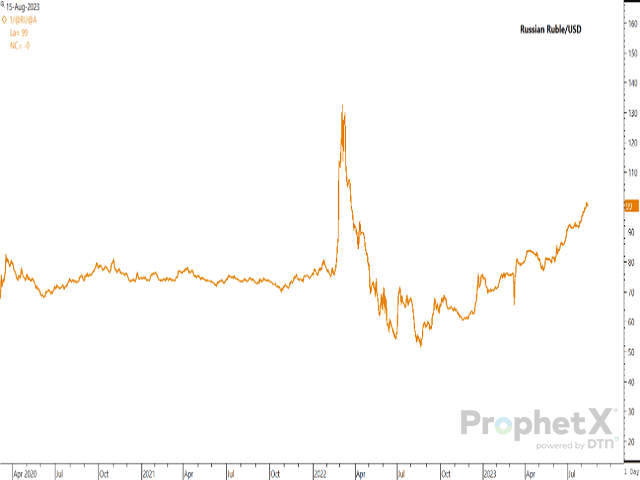
Russia's economy is faced with challenges linked to sanctions and the ongoing war, while its weakening currency is a supportive feature in its export trade of wheat.

The amount by which global vegetable oil production exceeds global consumption is forecast to fall for the first time in three years, while the global stocks/use ratio for the nine vegetable oils combined is forecast to remain flat.

As of Aug. 7, an estimated 4% of the provincial harvest is complete, which compares to the five-year average of 2%.

Nearby November canola continues to struggle, although remains above support and is trading sideways overall.
Statistics Canada's June exports represent the first 11 months of 2022-23 and the first 10 months of the row-crop crop year. This study looks at miscellaneous trade data for grain and grain products.
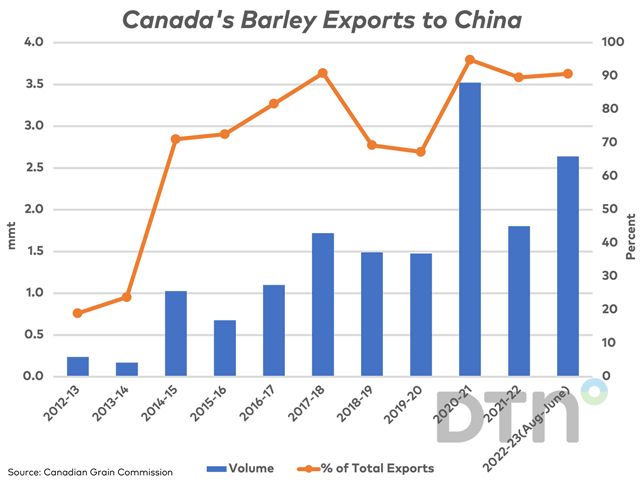
China has penalized Australia with an 80.5% anti-dumping tariff since 2020, which will come to an end on August 5. This will have implications for Canada's barley trade.
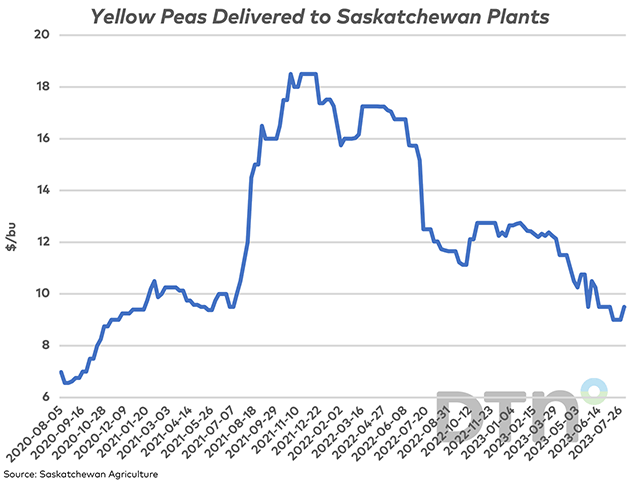
Saskatchewan yellow pea bids are reported higher as combines start to roll.
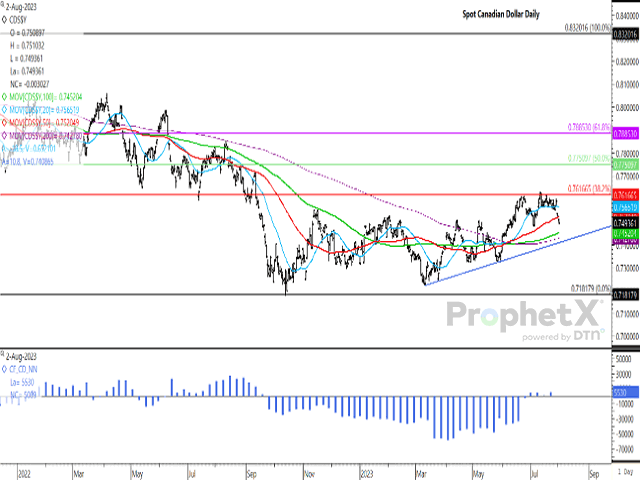
The Canadian dollar has given up close to 1 cent against the USD in the past two sessions.

This monthly chart shows the rapeseed/canola spread closing at its largest spread on record over the month of July.
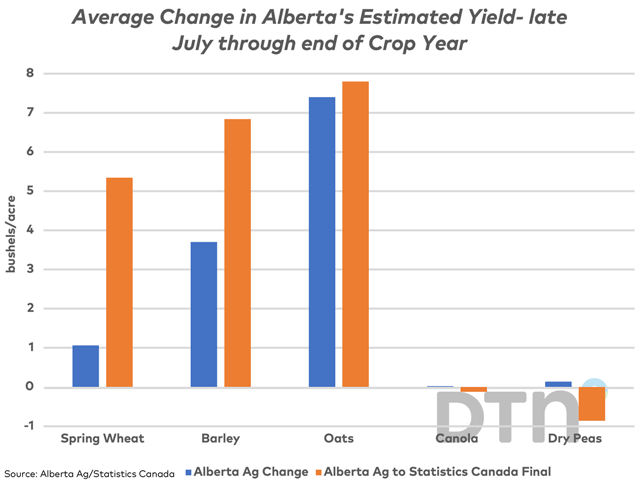
This study looks at Alberta Agriculture's initial crop yield estimate and how it relates to the final Statistics Canada estimate on average for select crops.
DIM[2x3] LBL[blogs-canada-markets-list] SEL[[data-native-ad-target=articleList]] IDX[2] TMPL[news] T[]
DIM[2x3] LBL[blogs-canada-markets-list-2] SEL[[data-native-ad-target=articleList]] IDX[5] TMPL[news] T[]